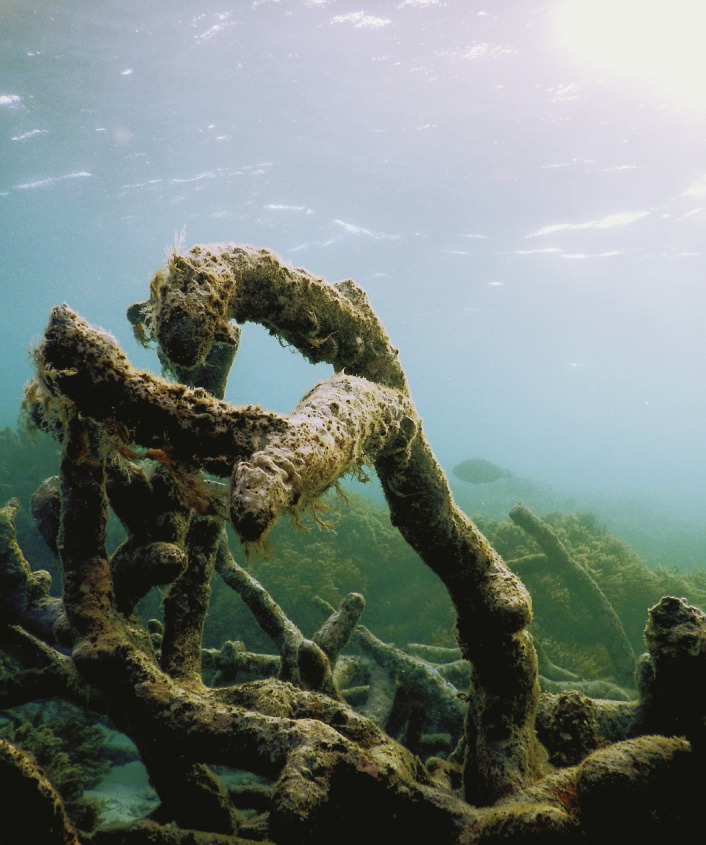Habitat degradation and coral reef fish behavior

Degraded coral reef at Lizard Island.
Widespread damage to coral reefs is exacerbated by the absence of fish communities that could potentially promote reef recovery. Reef fish populations rely on acoustic cues to guide habitat selection and settlement, but degraded reefs have altered acoustic characteristics. Timothy Gordon et al. (pp. 5193–5198) compared nocturnal soundscapes from 10 lagoonal reefs surrounding Lizard Island in Australia’s northern Great Barrier Reef that were recorded in the same location, at the same time points, and under similar conditions in November 2012 and November 2016. During the intervening period, three major events severely degraded the reef: Cyclone Ita, Cyclone Nathan, and a global mass-bleaching event in 2016. In field experiments at Lizard Island, the authors used light trap chambers and artificial patch reefs, coupled with loudspeakers broadcasting recordings of predegradation reef sound, postdegradation reef sound, and open-ocean sound, to examine habitat selection and settlement in wild fishes. Postdegradation soundscapes had significantly reduced acoustic complexity, richness, and sound-pressure levels compared with predegradation recordings. In addition, soundscapes from damaged reefs were 8% less attractive to fish larvae and resulted in 40% reduced settlement of juvenile fish, compared with predegradation equivalents. Further, postdegradation soundscapes were no more attractive to the fish than open-ocean sounds. Degradation of global reef soundscapes may reduce future fish settlement and limit reef resilience, according to the authors. — T.G.
Genome editing in a reef-building coral
Recent genetic studies of corals have provided correlational evidence about genes potentially involved in various aspects of coral biology, but rigorous testing of gene function has not been possible due to the lack of genetic tools. Phillip Cleves et al. (pp. 5235–5240) used the CRISPR/Cas9 system to edit the genome of the coral Acropora millepora. The authors designed single-guide RNAs (sgRNAs) targeting A. millepora genes encoding fibroblast growth factor 1a, green fluorescent protein (GFP), and red fluorescent protein. Next, the authors injected sgRNA/Cas9 complexes into fertilized eggs. Restriction fragment length polymorphisms, Sanger sequencing, and high-throughput Illumina sequencing showed that mutations had been introduced into all three target genes and that mutations had been induced in about half of the successfully injected larvae. The techniques also detected wild-type and a variety of mutant alleles in each larva in proportions showing that mutagenesis continued for at least a few cell cycles after injection. The authors also found that mutations were induced simultaneously in at least two paralogs of GFP. According to the authors, this genome-editing technique could potentially be used to rigorously test gene and pathway function in corals and other symbiotic cnidarians. — S.R.


